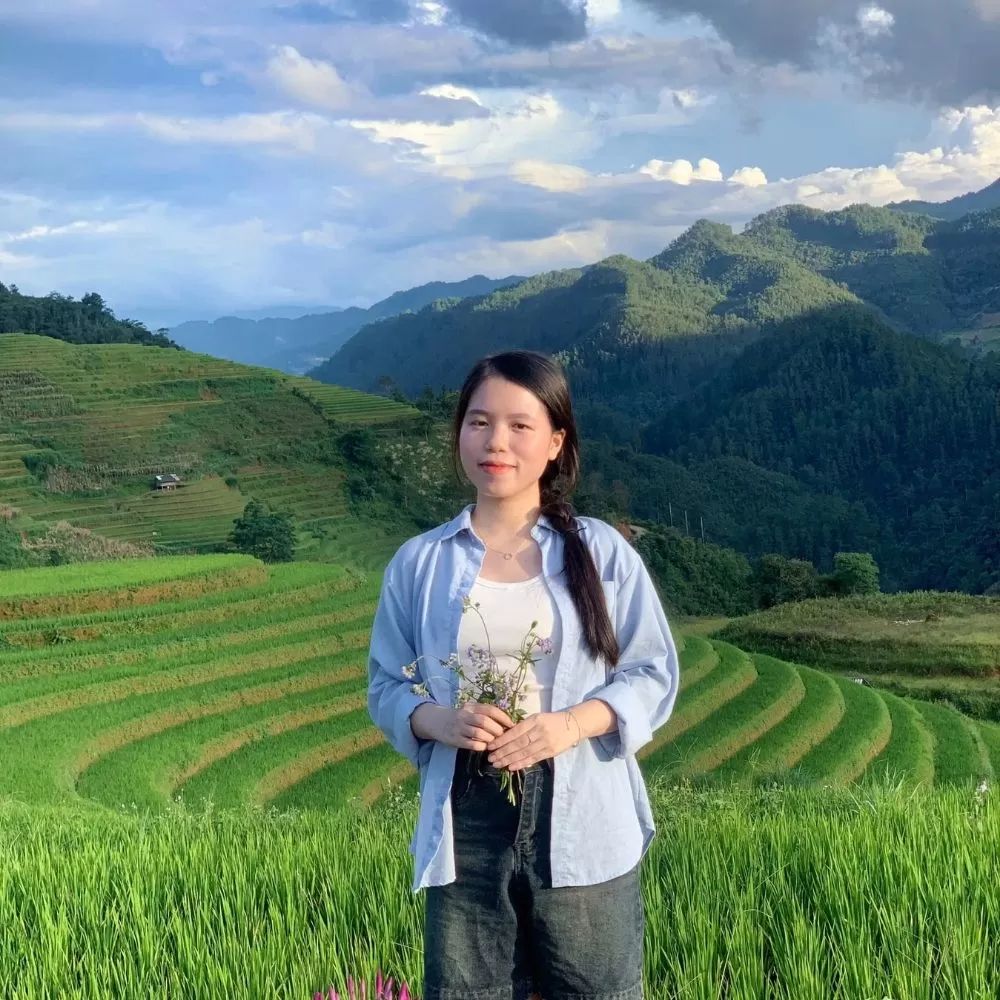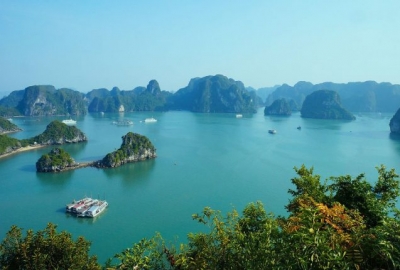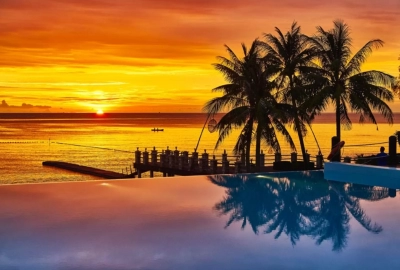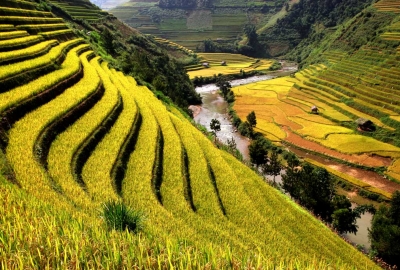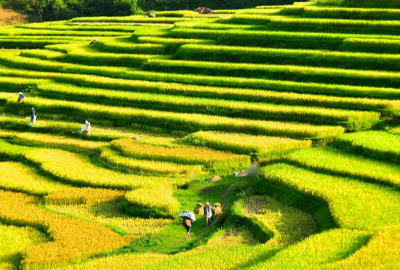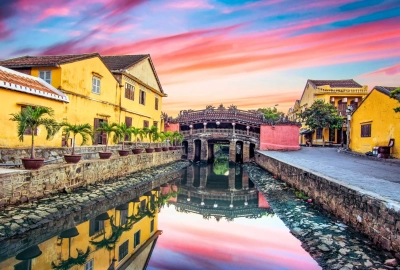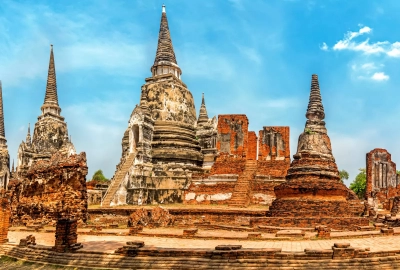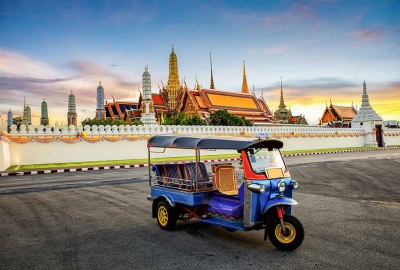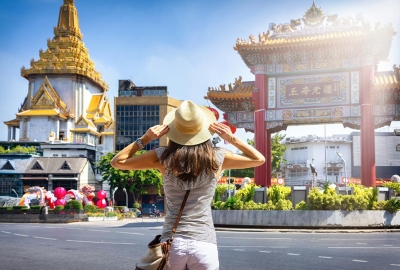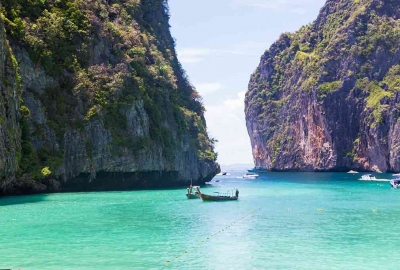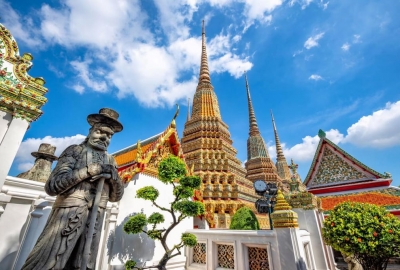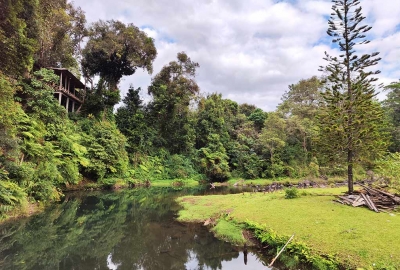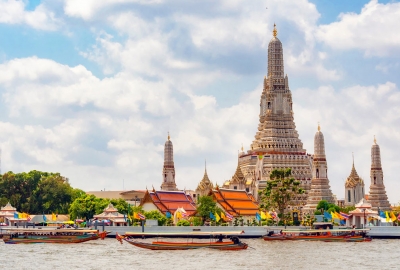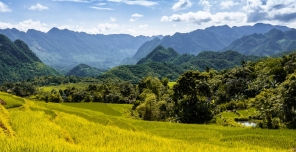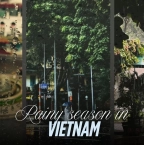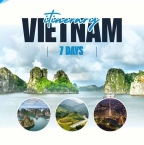
Best time to go to Vietnam and Thailand

Planning a trip to Southeast Asia often starts with one important question: what is the best time to go to Vietnam and Thailand? These two neighboring countries offer an incredible mix of landscapes, cultures and experiences, but each region has its own climate patterns that can greatly affect your journey. While Vietnam spans tropical and subtropical zones with distinct weather in the north, central and south, Thailand features a mix of monsoon seasons across its mainland and islands.
To help you avoid rainy days and make the most of your itinerary, this guide breaks down the best months to explore each region of Vietnam and Thailand, so your travel memories are full of sunshine, not surprises.
Need help planning the perfect trip? Let Hanoi Voyages craft a seamless itinerary tailored to your travel dates and interests across both countries.
Table of Contents
Vietnam weather by region
Vietnam has a tropical to subtropical climate, but due to its long and narrow geography, the country is divided into three distinct regions, each with its own weather patterns and seasons.
Northern Vietnam
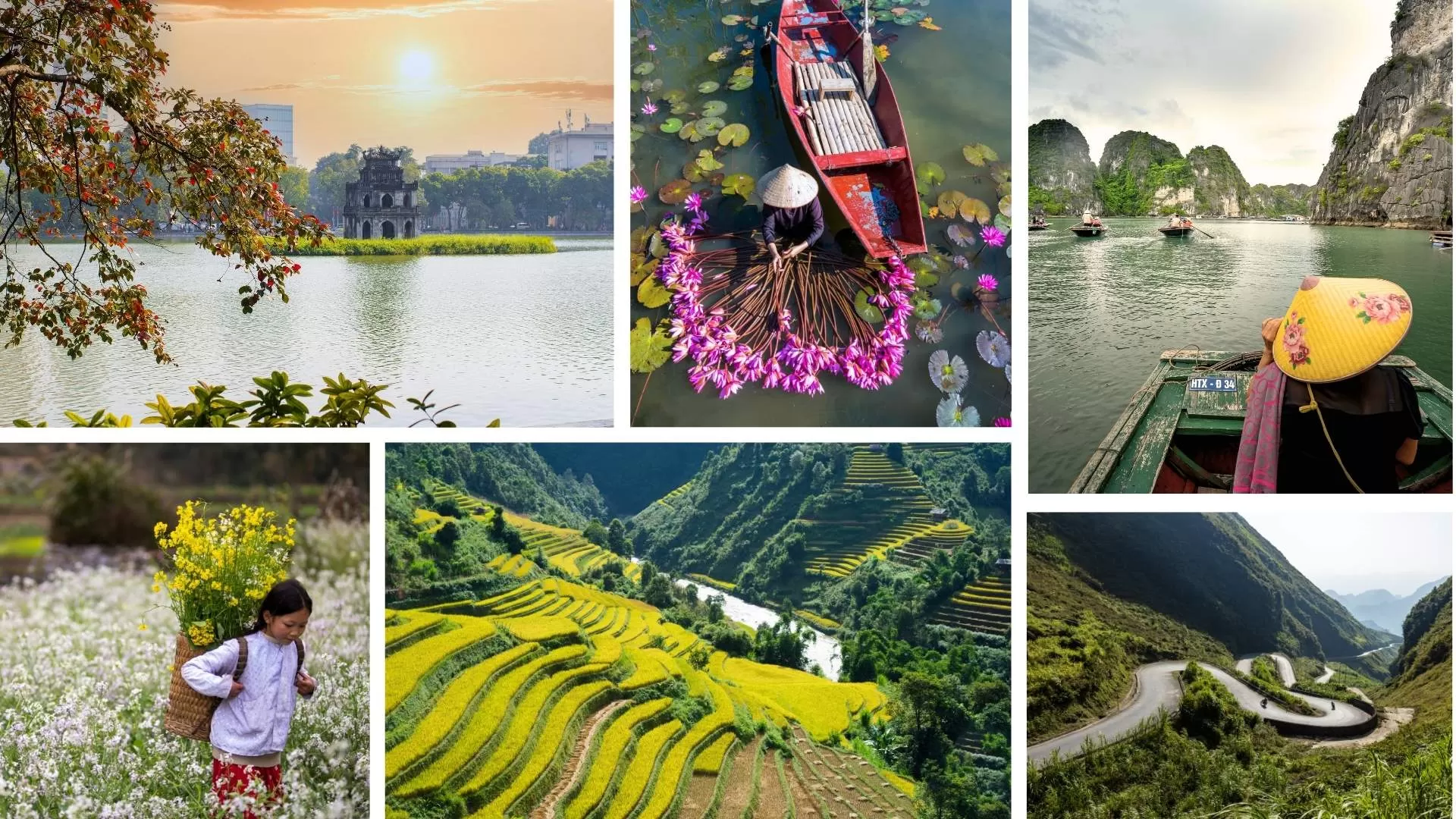
Northern Vietnam lies in a subtropical climate zone, which means it experiences four distinct seasons throughout the year: spring, summer, autumn and winter. This region has the most diverse weather in the country, ranging from hot and humid summers to cold and foggy winters.
Season | Months | Temperature | Weather |
Spring | March – April | 18–25°C | Mild, drizzly, fresh blossoms |
Summer | May – August | 28–38°C | Hot, humid, occasional storms |
Autumn | September – November | 20–28°C | Dry, cool breeze, golden foliage |
Winter | December – February | 10–20°C | Cold, overcast, foggy in highlands |
👉 The four-season cycle makes Northern Vietnam beautiful year-round, but autumn (Sep–Nov) and spring (Mar–Apr) are considered the best time to go to Northern Vietnam.
Top places to visit:
Hanoi – The capital is lovely in spring (March–April) and autumn (October–November), with mild weather and blooming trees. It’s the perfect time to wander the Old Quarter, visit historical temples and enjoy local street food in cool air.
Ha Long Bay – Best visited in spring and autumn when skies are clear, humidity is lower and the sea is calm—ideal conditions for cruising, kayaking, or even spending the night on a traditional junk boat.
Sapa & Ha Giang – These northern highland regions are breathtaking in autumn (September–October), when terraced rice fields glow golden during harvest season. Trekking is also great in spring, when hills are green and the weather is cool and dry.
Ninh Binh – Often referred to as “Ha Long Bay on land,” Ninh Binh shines in late spring (April–May) with lush green rice fields, or in early autumn (September) when the paddies start turning golden.
Central Vietnam
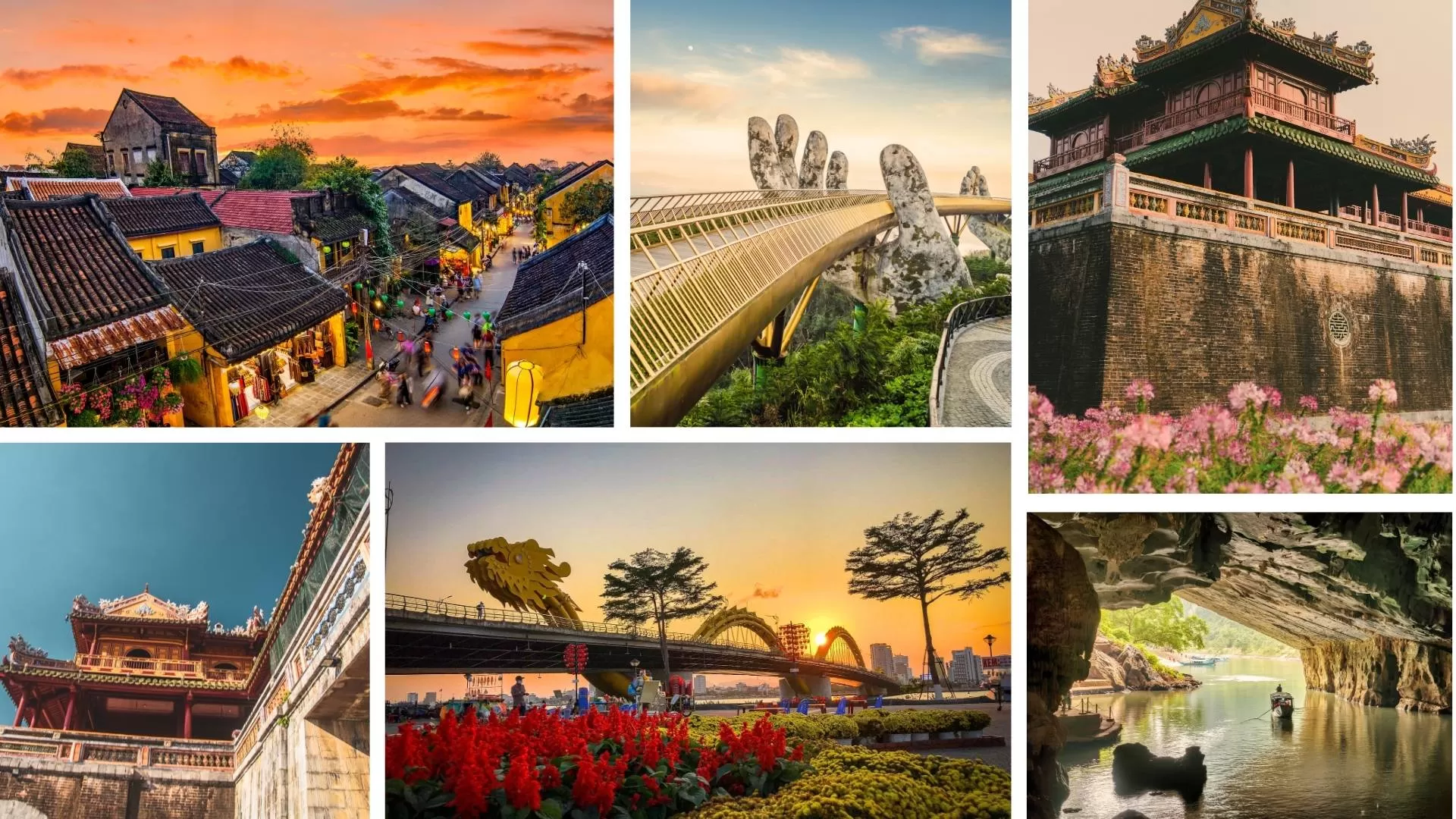
Central Vietnam is located in a tropical monsoon climate and it experiences two main seasons: a dry season from February to August and a rainy season from September to January. Due to its coastal location, the region is occasionally affected by typhoons during the rainy months.
Season | Months | Temperature | Weather |
Dry season | February – August | 25–35°C | Sunny, dry, hot in summer months |
Rainy season | September – January | 20–28°C | Frequent heavy rain, potential storms and floods |
👉 The best time to travel to Central Vietnam is from February to May, when it's dry, warm and not too hot. Avoid October–November due to flood risk.
Top places to visit:
Hue – The former imperial capital is best explored in spring (March–April) when the weather is dry and temperatures are mild. You can stroll through the ancient citadel, visit royal tombs and take a boat ride along the Perfume River without the intense summer heat.
Hoi An – This lantern-lit town is most magical from February to April, when the skies are clear and the air is comfortably warm. It’s the perfect season to explore the old town, cycle to rice fields, or relax at An Bang Beach. Hoi An also celebrates its lantern festivals around the full moon every month.
Da Nang – As a vibrant coastal city, Da Nang is best visited in spring and early summer (March–June) when the beaches are calm and sunny. From the Marble Mountains to the iconic Golden Bridge at Ba Na Hills, everything is easily accessible during the dry season.
Phong Nha – Ke Bang – One of Vietnam’s most famous cave systems, this national park is best explored between March and August when river levels are low and cave tours are fully open. Adventure travelers will enjoy jungle treks and underground rivers in dry weather.
Southern Vietnam
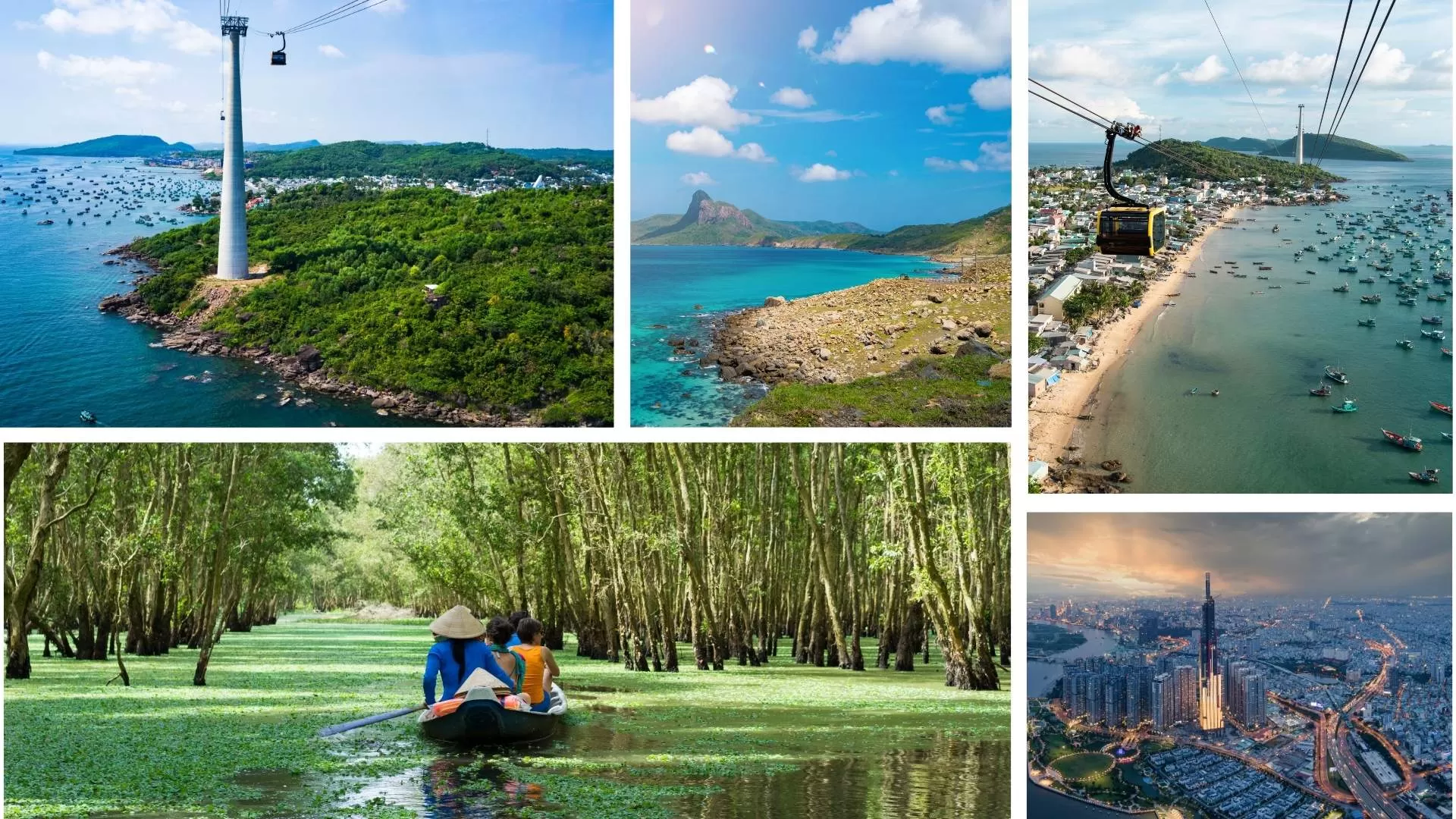
Southern Vietnam is characterized by a tropical monsoon climate with equatorial (subequatorial) influences, also known as a monsoonal subequatorial climate. This region experiences two distinct seasons: a dry season from December to April and a rainy season from May to November.
Season | Months | Temperature | Weather |
Dry season | December – April | 25–35°C | Hot, sunny, low humidity |
Rainy season | May – November | 26–34°C | High humidity, daily afternoon showers |
👉 The best time to go to Southern Vietnam is from December to April, perfect for Mekong cruises and Phu Quoc beach holidays.
Top places to visit:
Ho Chi Minh City (Saigon) – This bustling southern metropolis is most pleasant in the dry season (December–March). With clear skies and warm weather, it’s the ideal time to discover colonial landmarks, vibrant street food and the fast-paced city life without the rain.
Mekong Delta (Can Tho, Ben Tre, Vinh Long) – The delta is at its most charming during January–March, when the river levels are stable and the fruit orchards are in bloom. Boat trips through narrow canals and visits to floating markets are most enjoyable under blue skies.
Phu Quoc Island – Often called Vietnam’s island paradise, Phu Quoc is best visited between November and March when the sea is calm and perfect for snorkeling, diving and relaxing on white-sand beaches. Resorts are fully operational and sunsets are spectacular.
Con Dao Islands – These remote islands are great for beach lovers and history buffs alike. The best time to visit is from March to June, when the water is crystal clear and sea turtles start nesting. It’s also a quieter alternative to the more popular coastal spots.
Thailand weather by region
Thailand’s climate is tropical and dominated by three main seasons: hot, cool and rainy. However, the timing and intensity vary between the northern, central and southern regions.
Northern Thailand
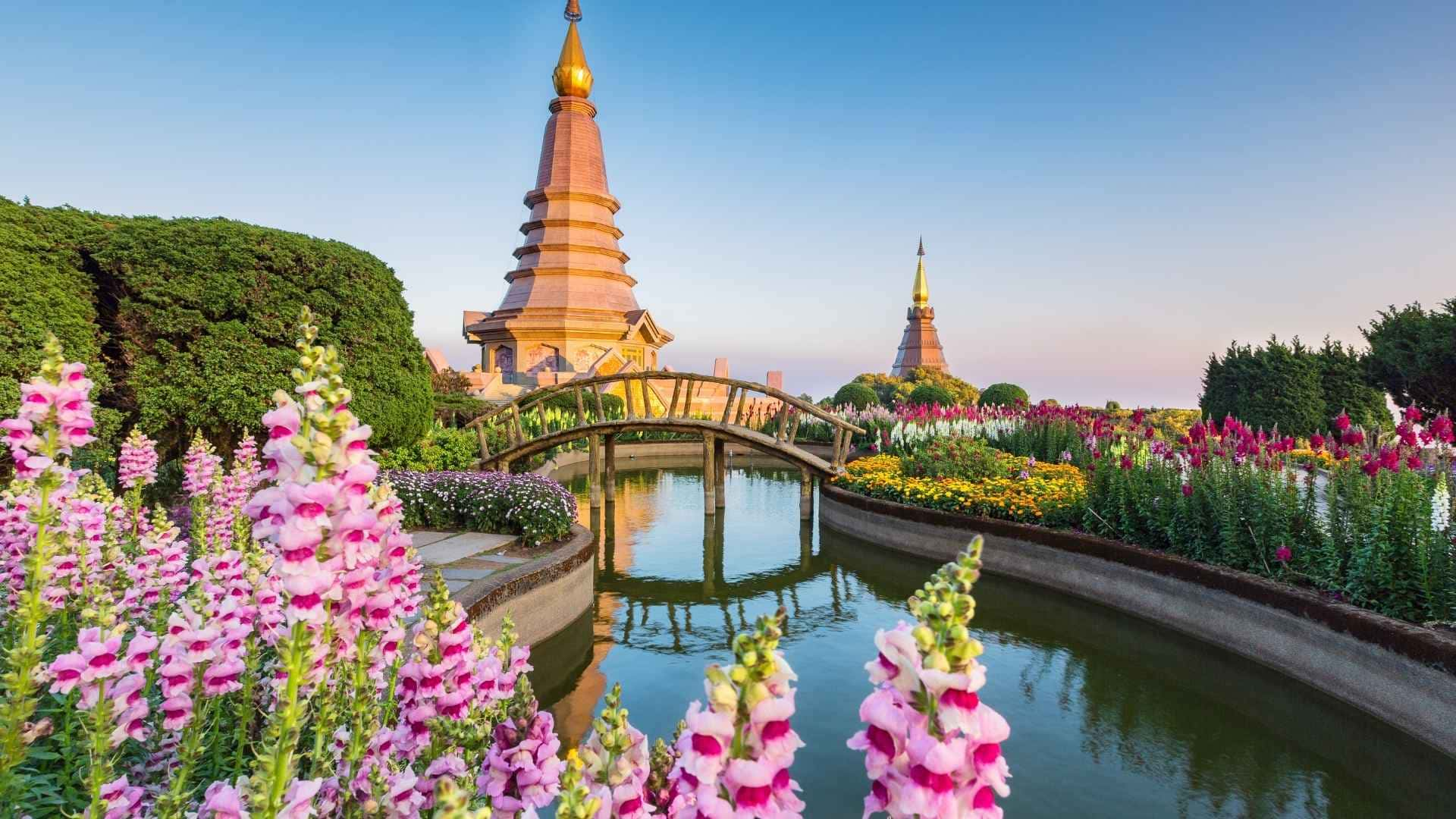
Northern Thailand is situated in a tropical savanna climate, influenced by elevation, resulting in three main seasons: the cool season (November to February), the hot season (March to May) and the rainy season (June to October). This seasonal cycle makes the north ideal for cultural and nature-based activities during the cool months.
Season | Months | Temperature | Weather |
Cool season | November – February | 15–28°C | Dry, pleasant, chilly mornings |
Hot season | March – May | 30–40°C | Very hot, dry |
Rainy season | June – October | 25–33°C | Heavy rain, lush scenery |
Top places to visit:
Chiang Mai – The cultural heart of the north is at its best in November to February, when temperatures are cool and skies are clear—ideal for visiting temples, exploring old towns, or joining cooking classes. November also hosts the famous Yi Peng Lantern Festival, where thousands of lanterns light up the night sky.
Chiang Rai – A quieter alternative to Chiang Mai, this city is famous for the stunning White Temple (Wat Rong Khun). It’s best visited in cool season, when the weather supports scenic drives and temple hopping across the Golden Triangle region.
Pai – Nestled in the mountains, Pai is a peaceful town known for its laid-back vibe, hot springs and scenic canyons. Go from December to February for comfortable trekking and motorbike adventures.
Central Thailand
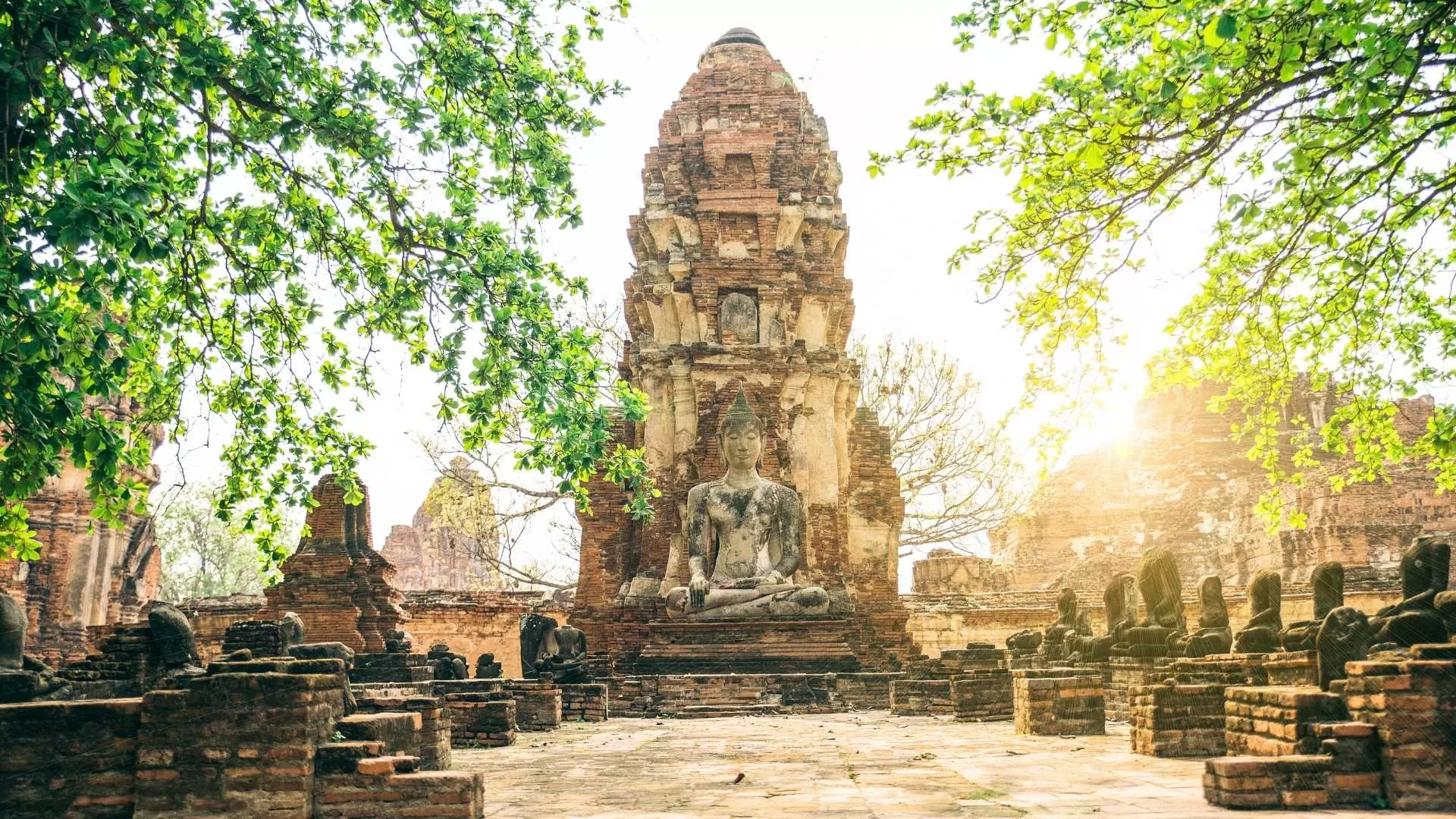
Central Thailand has a typical tropical climate with three seasons similar to the north: a cool season, a hot season and a rainy season. While it doesn’t get as cool as the north, the weather during the cool season is perfect for city exploration.
Season | Months | Temperature | Weather |
Cool season | November – February | 22–32°C | Warm days, low humidity |
Hot season | March – May | 30–40°C | Sweltering heat, humid |
Rainy season | June – October | 26–33°C | Frequent rain, occasional flooding |
Top places to visit:
Bangkok – Thailand’s bustling capital is most enjoyable from November to February, when humidity drops and temperatures hover around 26–30°C. This is the ideal time for visiting the Grand Palace, Wat Arun, floating markets and rooftop bars without being overwhelmed by heat.
Ayutthaya – Just an hour from Bangkok, this ancient capital is perfect for a day trip in cool season. Rent a bike and explore historic ruins, temples and river views under gentle sun and blue skies.
Kanchanaburi – Known for the Bridge on the River Kwai, Erawan Waterfalls and scenic train rides, Kanchanaburi is best from November to February. Waterfalls flow strongly after the rainy season but are accessible and less slippery.
Southern Thailand
 Southern Thailand is part of a tropical monsoon climate and experiences two seasons, but they vary depending on the coast. The west coast (Phuket, Krabi) sees a dry season from November to April and a wet season from May to October. Meanwhile, the east coast (Koh Samui, Koh Tao) has its dry season from January to August and rainy season from September to December.
Southern Thailand is part of a tropical monsoon climate and experiences two seasons, but they vary depending on the coast. The west coast (Phuket, Krabi) sees a dry season from November to April and a wet season from May to October. Meanwhile, the east coast (Koh Samui, Koh Tao) has its dry season from January to August and rainy season from September to December.
West Coast (Phuket, Krabi)
Season | Months | Temperature | Weather |
Dry season | November – April | 26–34°C | Ideal beach weather, calm seas |
Rainy season | May – October | 25–32°C | Stormy, rough sea, fewer tourists |
East Coast (Koh Samui, Koh Phangan)
Season | Months | Temperature | Weather |
Dry season | January – August | 26–34°C | Sunny, beach-perfect |
Rainy season | September – December | 25–31°C | Wettest months, especially November |
Top places to visit:
Phuket – Thailand’s largest island is a favorite for beach lovers, with everything from bustling nightlife in Patong to quiet escapes in Kata or Nai Harn. The best time to visit is November to April, when the skies are blue, the sea is calm and conditions are perfect for island hopping, snorkeling and sunset cruises in Phang Nga Bay.
Krabi – Known for its dramatic limestone cliffs and emerald-green waters, Krabi is ideal for kayaking through mangroves, climbing in Railay, or relaxing at Ao Nang Beach. Visit between November and March for pleasant weather and smooth boat tours to nearby islands like Hong or Chicken Island.
Koh Phi Phi – Famed for their cinematic beauty, the Phi Phi Islands offer crystal-clear water, snorkeling, cliff jumping and lively nightlife. The best time to go is December to April, when sea conditions are perfect for ferry rides and marine activities.
Koh Lanta – A quieter and more laid-back alternative to Phuket or Phi Phi, Koh Lanta features long sandy beaches, lush jungle and welcoming local communities. It’s best enjoyed from November to April, when the dry season brings sunny skies and fewer crowds.
Koh Samui – Located on the Gulf coast, Koh Samui is a year-round island getaway with palm-fringed beaches, luxury resorts, waterfalls and vibrant nightlife. The best time to visit is January to August, with the driest months falling between February and April.
Koh Phangan – While best known for the monthly Full Moon Party, Koh Phangan also offers secluded beaches and yoga retreats. Visit between February and August for sunny weather, whether you're partying under moonlight or enjoying wellness resorts along quieter shores.
Koh Tao – Renowned as a diving hotspot, Koh Tao is the place to go for underwater exploration, with affordable dive schools and coral-rich waters. The ideal time to visit is March to September, when sea conditions are at their calmest and visibility is at its peak.
Choose the best time to go to Vietnam and Thailand
Choosing the best time to go to Vietnam and Thailand can make a huge difference in how you experience these two stunning Southeast Asian destinations. While both countries offer year-round appeal, the most favorable time to visit is generally between November and April. During these months, most regions enjoy dry, pleasant weather—perfect for outdoor adventures, cultural exploration and beach holidays.
In Vietnam, this period brings cool, clear skies in the north and sunny conditions along the central and southern coastlines. At the same time, Thailand enters its dry season, offering ideal beach weather in Phuket, Krabi and Koh Samui, along with festive energy in cities like Bangkok and Chiang Mai. Planning your trip during this window ensures you’ll encounter the best of both countries under optimal weather conditions.
At Hanoi Voyages, we offer other exciting tour packages that let you experience the best of Vietnam and Thailand's beauty. CHOOSE AN IDEA and we will plan your trip together!
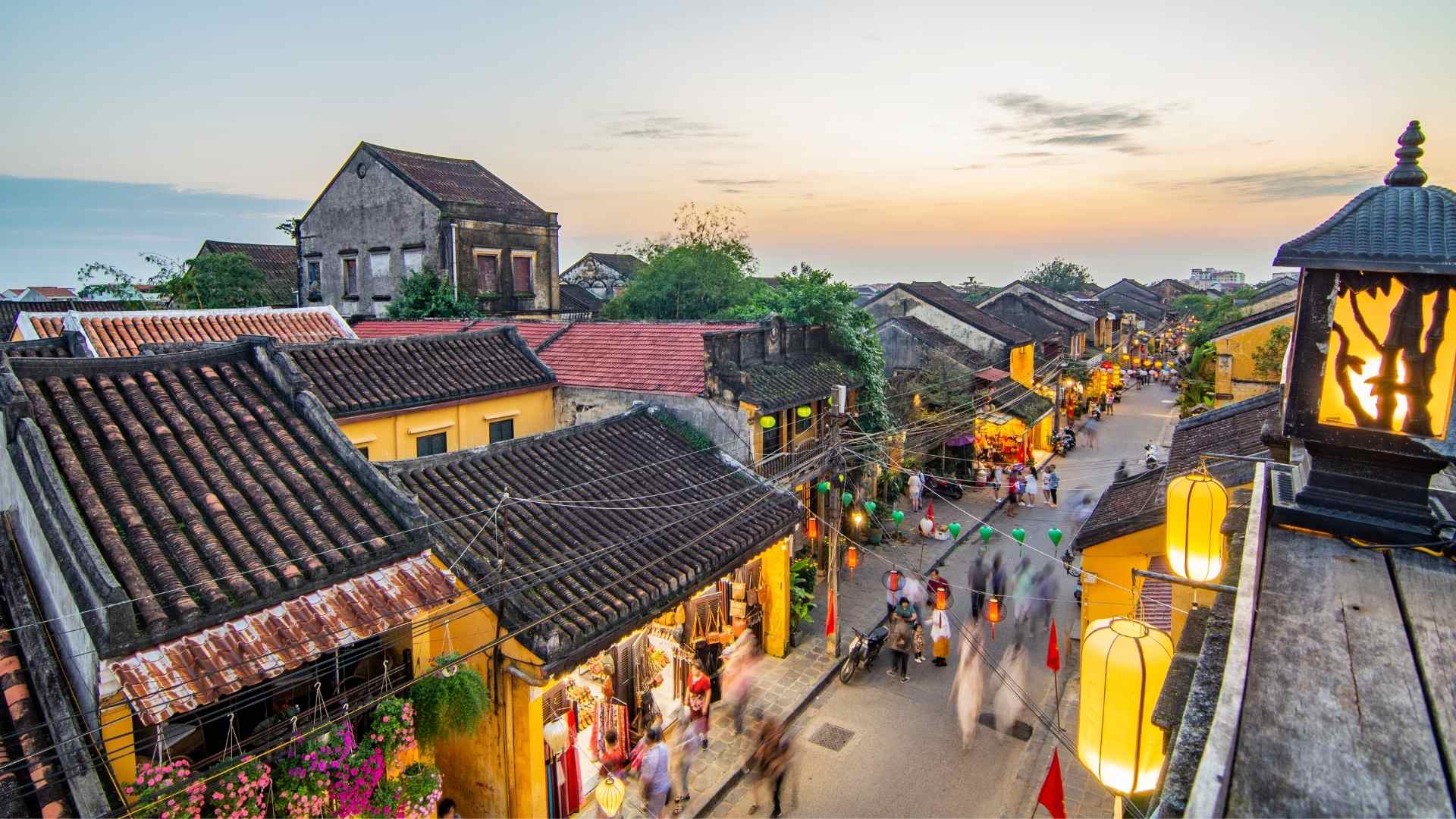 | 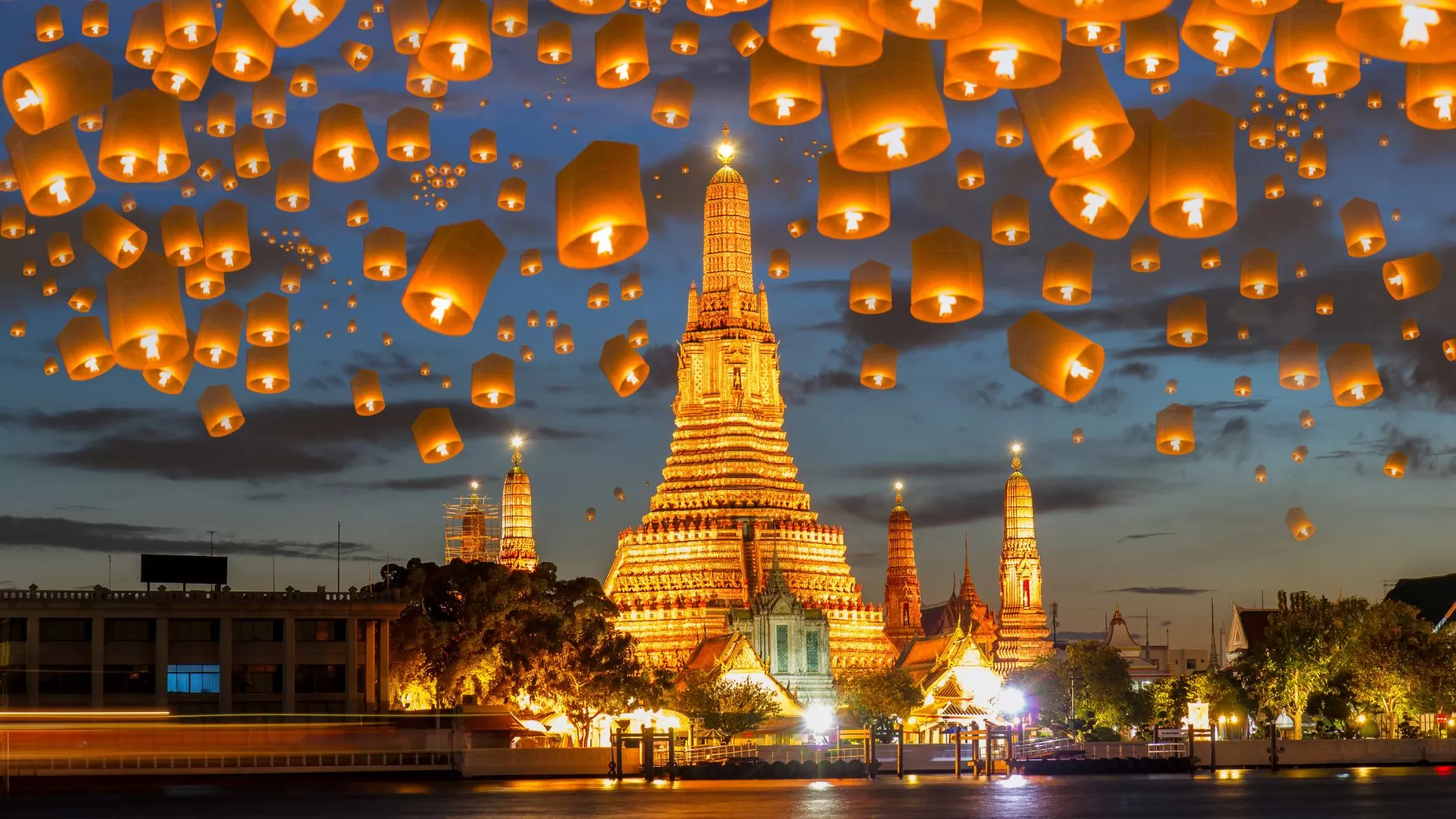 | 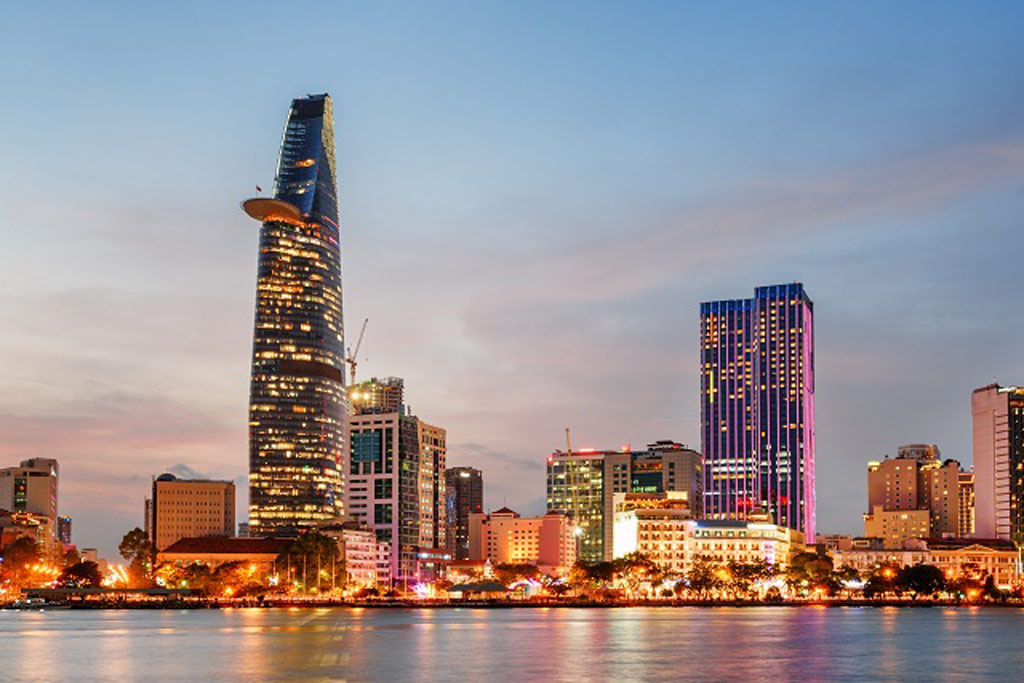 |
Combined Thailand and Vietnam Tour – 14 days of unforgettable travel to explore both countries, featuring Bangkok, Hanoi and more. | Thailand Vietnam itinerary in 2 weeks Explore vibrant cities, hidden villages, rich culture and stunning landscapes from Bangkok to Halong Bay. | Combined Thailand - Vietnam tour 14 days Explore Thailand’s vibrant sights and Vietnam’s breathtaking natural landscapes in one unforgettable journey. |
Choosing the best time to go to Vietnam and Thailand is key to unlocking unforgettable travel experiences across both countries. By planning your visit during the ideal seasons for each region, you’ll enjoy comfortable weather, vibrant festivals and breathtaking landscapes. Ready to start your adventure? Let Hanoi Voyages help you design the perfect itinerary tailored to the best travel times and your personal interests.
Contact us today to make your dream trip a reality!
Discover more about Vietnam and Thailand through our blog:
>>> Best Thailand and Vietnam tour 14 days for first-time travelers
>>> Two weeks in Thailand and Vietnam: The ultimate guide
>>> Top 9 must-try travel experiences in Vietnam
>>> Top 18 most beautiful places to visit in Vietnam
>>> Top 9 must-try travel experiences in Thailand
>>> Top 9 best islands in Thailand for luxury travel
Dream about your trip to Asia, in private
We are here to make it happen with youFREE QUOTE, WITHOUT OBLIGATION

